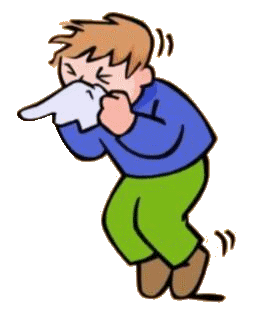Common Cold and Flu
The terms "a cold" and "the flu" are often confused and used interchangeably by parents. The common cold, caused by any one of 250 viruses, lasts for a few days and causes cough and a stuffy or runny nose, which may be accompanied by a fever. The "flu", caused by the influenza virus, is a potentially more serious infection but often begins like a cold, but is usually associated with spiking fever, rigors, chills, body aches and headache. The child may have poor appetite and complains of weakness and is listless.
The common cold usually lasts a few days and usually disappears on its own without any complication or problem. On the other hand, the flu can last up to a week or even longer. Also, the cold, cough and fatigue from flu can go on for weeks. Hence, the biggest difference is that the flu is not the same as a cold as it is potentially a much more dangerous infection.
Both the viruses causing the common cold and the flu are spread from one person to another by airborne droplets in a cough or a sneeze. It is important to realise that these viruses can also be spread indirectly because it can live for up to 48 hours outside of the body. This virus can be contracted from surfaces such as toys, eating utensils, computer keyboards, doorknobs, and most surfaces. Don't forget that unwashed hands can also transmit the virus.
 |
| Source: http://4.bp.blogspot.com/_iEoS6G-WyD0/TKCj1choIjI/AAAAAAAAAMI/XD0P-Inr-XA/s400/sneezing.gif |
Toddlers with chronic medical conditions, such as asthma and heart problems can develop sever forms of the disease like the deadly pneumonia. The influenza virus weakens the body's immune or defense system and makes it easier for bacterial infections to occur. As such, extra care should be taken to prevent these children at risk. Influenza infection rates are higher in younger children, and even healthy kids can end up quite sick as a result of the flu. Some studies have shown that up to 40% of pre-school age children develop the flu and on average the pre-school toddler would have approximately 11 episodes of upper respiratory tract infections in a year.
There is no specific cure or medicine for both the common cold and the flu. Usually, adequate rest with sufficient fluids suffice with judicious use of paracetamol to manage high fevers and body aches. Occasionally, symptomatic relief with mild antihistamines may be prescribed but these are not recommended routinely and should be used with caution.
Aspirin is an absolute contraindication and antibiotics are hardly of any use. Influenza vaccines are available but protection usually lasts for one year until the new annual strain of influenza virus is identified.
Health education and personal hygiene is crucial like avoiding close contact with ill people and keeping the child at home when sick. Teach children, like adults, to cover their mouths and noses with a tissue when coughing or sneezing. Hand washing, especially before meals, should be taught from an early age.







